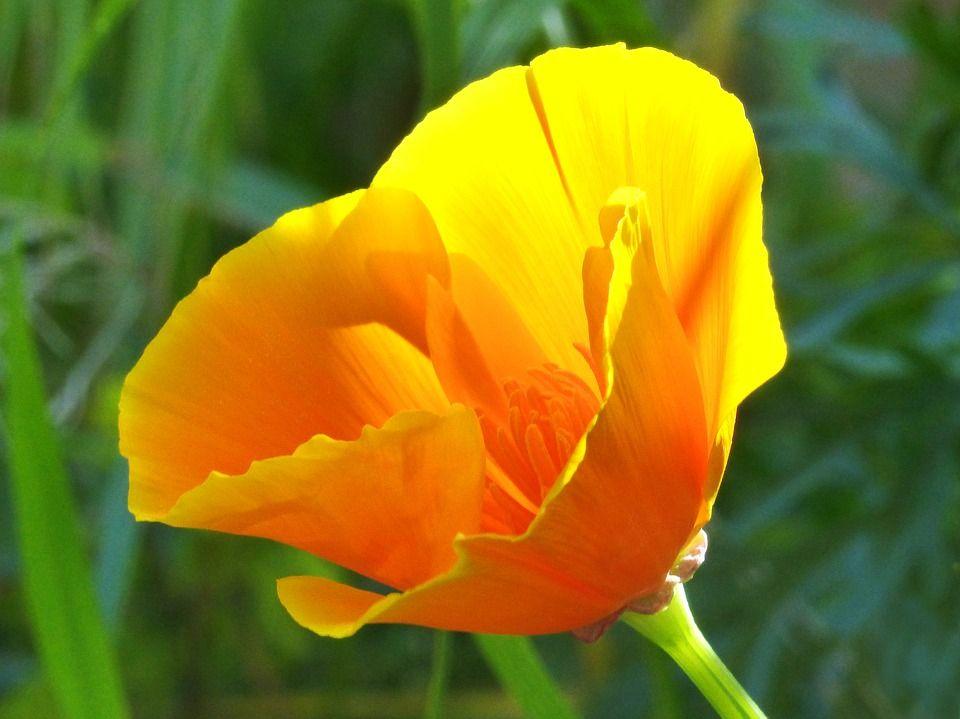
California Poppy Eschscholzia californica
California Poppy
Nomenclature
Eschscholzia californica
Family: Papaveraceae
Descriptive Characteristics
Annual flower 1-2 feet in height, long stalks with grayish green foliage. Leaves are long and divided in round, lobed segments. Flowers are long stems with four wide fan shaped petals that are silky. Colors range from yellow to orange. Flower from February to September. Fruit is slender and podlike and splits into 2 to release small black seeds.
Harvest when the flower is flowering.
Propagate seeds in a sunny border outdoors. They do not transfer well so plant them where you want them. Thin the keiki so that they stand 6 to 8 in apart. Pull entire plant from ground to harvest. Dry in paper bag.
Active Constituents
Eschscholtzine, californidine, sanguinarine, chelerythrine
Flavone glycosides and Alkaloids such as protopine, cryptopine, and chelidonine similar to Opium Poppy.
Therapeutic Actions
Antimicrobial, nervine, sedative, analgesic, Anodyne; Antispasmodic; Diaphoretic; Diuretic; Galactofuge; Odontalgic; Mild Narcotic; Hypnotic; Sedative, Colic pains; gall-bladder colic pain; toothaches; sores; ulcers; thin dull hair; nervous tension; anxiety; insomnia; incontinence (especially in children); bedwetting; lactating breasts
Formulary
Preparation/Pharmacy: Infusion:
Pour a cup of boiling water onto 1-2 teaspoonfuls of the dried herb and leave to infuse for 10 minutes. A cup should be drunk at night to promote restful sleep.
CYP450
CYP3A4
CYP2C9
CYPC19
CYP2D6
CYP1A2
Research
Long-term use is acceptable and not considered habit forming. Don't use if you're pregnant or breast feeding. May be slightly dangerous if given to children or senior citizens or taken in large quantities. Do not take with prescription medications. To some sensitive individuals the plant can exhibit very subtle euphoric properties.
References
Stone, B. (2007) California Poppy Plant Monograph. Retrieved from http://archives.evergreen.edu/webpages/curricular/2006-2007/healinggardens0607/healinggardens/california-plant-monograph/index.html
Hori, K., Yamada, Y., Purwanto, R., Minakuchi, Y., Toyoda, A., Hirakawa, H., & Sato, F. (2018). Mining of the Uncharacterized Cytochrome P450 Genes Involved in Alkaloid Biosynthesis in California Poppy Using a Draft Genome Sequence. Plant & cell physiology, 59(2), 222–233. doi:10.1093/pcp/pcx210
